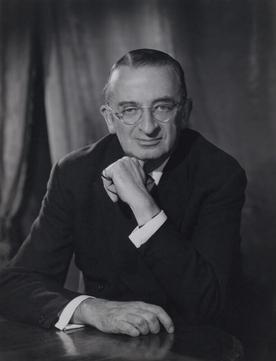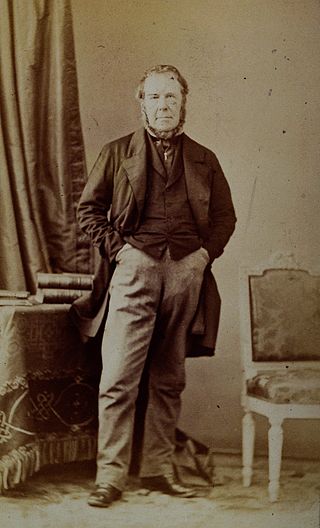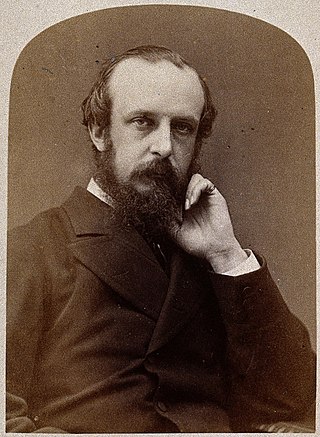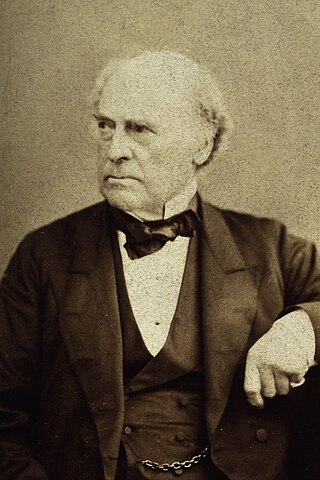Related Research Articles

The Royal College of Surgeons of England is an independent professional body and registered charity that promotes and advances standards of surgical care for patients, and regulates surgery and dentistry in England and Wales. The college is located at Lincoln's Inn Fields in London. It publishes multiple medical journals including the Annals of the Royal College of Surgeons of England, the Faculty Dental Journal, and the Bulletin of the Royal College of Surgeons of England.

Sir William Scovell Savory, 1st Baronet, was a British surgeon.
William Henry Battle was an English surgeon and teacher.

Charles Barrett Lockwood was a British surgeon and anatomist who practiced surgery at St. Bartholomew's Hospital in London. Lockwood was a member of the Royal College of Surgeons.
Russell Claude Brock, Baron Brock was a leading British chest and heart surgeon and one of the pioneers of modern open-heart surgery. His achievements were recognised by a knighthood in 1954, a life peerage in 1965, and a host of other awards.

Horace Evans, 1st Baron Evans GCVO was a Welsh general physician known for serving the British royal family.
The Bradshaw Lectures are lectureships given at the invitation of the Royal College of Physicians and the Royal College of Surgeons of England. It is held on alternate years in rotation with the Hunterian Oration.
The Hunterian Oration is a lecture of the Royal College of Surgeons of England, named in honour of pioneering surgeon John Hunter and held on his birthday, 14 February, each year.
Sir Victor Ewings Negus, MS, FRCS was a British surgeon who specialised in laryngology and also made fundamental contributions to comparative anatomy with his work on the structure and evolution of the larynx. He was born and educated in London, studying at King's College School, then King's College London, followed by King's College Hospital. The final years of his medical training were interrupted by the First World War, during which he served with the Royal Army Medical Corps. After the war, he qualified as a surgeon and studied with laryngologists in France and the USA before resuming his career at King's College Hospital where he became a junior surgeon in 1924.

Thomas Wormald was an English surgeon.

John Birkett, F.R.C.S. F.L.S. (1815–1904) was an English surgeon and member of the Linnean Society of London who was an early specialist on breast disease, including breast cancer, and an early advocate of histology. He published a book on breast disease in the mid-nineteenth century.

Sir Anthony Alfred Bowlby, 1st Baronet was a British Army officer, surgeon and pathologist.

Sir James Berry FRCS FSA was a Canadian-born British surgeon.

Christopher Heath FRCS was an English anatomist and general surgeon

Frederic Carpenter Skey FRS was an English surgeon.

Tobias Levitt was a South African medical doctor who wrote a textbook on the thyroid.
Pankaj Chandak is an Indian-born British surgeon who made innovations in the use of 3D printing in paediatric kidney transplant surgery. He has also undertaken work in education, public engagement, presenting demonstrations, and acting in The Crown television series. He graduated from Guy's and St Thomas' University of London medical school and was an anatomy demonstrator under Professor Harold Ellis CBE.
Patrick Wensley Clarkson,, was a plastic surgeon at Guy's Hospital in London, best known for surgery of the hand and the description of "Poland Syndactyly", later termed Poland syndrome.
Hugh Graham Stack FRCS was a British orthopaedic surgeon with a specialism in surgery of the hand. He was secretary of the Second Hand Club and was instrumental in the merger of the British hand surgery organisations to become the British Society for Surgery of the Hand.

John Percy Lockhart-Mummery FRCS, was a British surgeon at St Mark's Hospital, London, who devised a classification of rectal cancer and described familial polyposis which led to the formation of the polyposis registry. He was the author of several books, including Diseases of the Rectum and Colon and their Surgical Treatment (1923) and The Origin of Cancer (1934). His work on colorectal surgery earned him the nickname "King Rectum".
References
- 1 2 3 4 5 6 7 8 9 10 11 12 England, Royal College of Surgeons of (22 December 2014). "Hume, John Basil - Biographical entry - Plarr's Lives of the Fellows Online". livesonline.rcseng.ac.uk. Retrieved 17 April 2018.
- 1 2 "John Basil Hume". Lancet. 1 (7855): 466. 16 March 1974. doi:10.1016/s0140-6736(74)92436-2. ISSN 0140-6736. PMID 4131482.(subscription required)
- 1 2 CH, The Rt Hon Lord Owen (2005). "The effect of Prime Minister Anthony Eden's illness on his decision-making during the Suez crisis". QJM: An International Journal of Medicine. 98 (6): 387–402. doi: 10.1093/qjmed/hci071 . ISSN 1460-2725. PMID 15879438.
- ↑ Morton, Michael Quentin (2013). Buraimi: The Struggle for Power, Influence and Oil in Arabia. I.B.Tauris. p. 118. ISBN 978-1-84885-818-3.
- ↑ White, Harvey (2007). A History of the London Clinic: A Celebration of 75 Years. Royal Society of Medicine Press. p. 271. ISBN 978-1-85315-712-7.